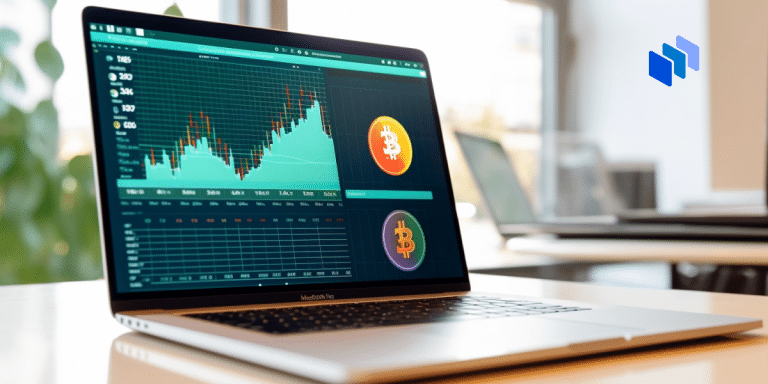AI’s impact on cryptocurrency trading strategies and price prediction. – AI’s impact on cryptocurrency trading strategies and price prediction is rapidly reshaping the landscape of digital finance. From sophisticated algorithmic trading bots making split-second decisions to AI-powered sentiment analysis tools predicting market shifts, artificial intelligence is fundamentally altering how investors approach the volatile world of cryptocurrencies. This exploration delves into the multifaceted influence of AI, examining both its potential benefits and inherent limitations in navigating this dynamic market.
This analysis covers the use of AI-driven trading bots, exploring their algorithms, risk management, and ethical implications. We’ll dissect the capabilities and shortcomings of AI in predicting cryptocurrency prices, highlighting the role of models like LSTM and RNN. Furthermore, we’ll investigate how AI enhances sentiment analysis in crypto trading, its application in detecting fraudulent activities, and its overall effect on market efficiency and liquidity.
By understanding these key areas, we aim to provide a comprehensive overview of AI’s transformative role in the cryptocurrency ecosystem.
AI-Driven Trading Bots in Cryptocurrency Markets: AI’s Impact On Cryptocurrency Trading Strategies And Price Prediction.
The integration of artificial intelligence (AI) into cryptocurrency trading has revolutionized market strategies, offering both significant opportunities and considerable challenges. AI-powered trading bots, capable of analyzing vast datasets and executing trades at speeds far exceeding human capabilities, are transforming how individuals and institutions participate in the volatile cryptocurrency market. This section delves into the design, performance, ethical considerations, and algorithmic choices behind these sophisticated trading tools.
Hypothetical AI-Powered Bitcoin Trading Bot
A hypothetical AI-powered Bitcoin trading bot, named “KryptoBot,” could leverage a combination of machine learning algorithms to predict price movements and execute trades. KryptoBot would utilize a Long Short-Term Memory (LSTM) network for time series analysis of historical Bitcoin price data, incorporating factors like trading volume, market sentiment derived from social media analysis, and relevant news events. The LSTM network would predict short-term price fluctuations (e.g., within the next hour or day).
A reinforcement learning algorithm, such as Q-learning, would then optimize trading strategies based on simulated market environments, learning to maximize profit while minimizing risk. Risk management would involve setting stop-loss orders to limit potential losses on individual trades and employing a diversification strategy, allocating a portion of capital across other cryptocurrencies to reduce overall portfolio risk. KryptoBot would also incorporate a sentiment analysis module, using Natural Language Processing (NLP) to gauge market sentiment from social media and news sources, adjusting its trading strategy accordingly.
This multi-faceted approach combines predictive modeling with adaptive learning and robust risk management.
Rule-Based vs. AI-Driven Trading Bots: A Simulated Comparison
In simulated cryptocurrency market conditions, rule-based trading bots, which follow pre-programmed rules based on technical indicators (e.g., moving averages, RSI), often exhibit limitations. They struggle to adapt to unexpected market shifts or complex patterns. In contrast, AI-driven bots, capable of learning and adapting, demonstrate superior performance in dynamic and unpredictable environments. For instance, during a sudden market crash, a rule-based bot might continue to execute pre-programmed buy or sell orders, leading to significant losses.
An AI-driven bot, however, could analyze the unfolding situation, recognizing the unusual market behavior, and adjust its strategy to mitigate losses or even capitalize on the volatility. Simulated tests using historical Bitcoin data have shown that AI-driven bots, particularly those using deep learning techniques, often outperform rule-based bots in terms of profitability and risk-adjusted returns, especially in periods of high volatility.
However, the performance of any bot is heavily dependent on the quality of the training data and the sophistication of its algorithms.
Ethical Considerations of AI-Powered Trading Bots
The use of AI-powered trading bots raises significant ethical concerns. The potential for market manipulation is a primary concern. A sophisticated bot, programmed with malicious intent, could artificially inflate or deflate Bitcoin prices through coordinated buying or selling, manipulating market sentiment and potentially harming less sophisticated traders. Furthermore, the lack of transparency in some AI algorithms raises concerns about fairness and accountability.
It can be difficult to understand how an AI bot arrived at a particular trading decision, making it challenging to identify and address potential biases or flaws in its logic. Regulations are needed to ensure responsible development and deployment of AI-driven trading systems, preventing their misuse and promoting fair and transparent market practices. Auditable AI systems and clear guidelines for ethical algorithm design are crucial for mitigating these risks.
Comparison of AI Algorithms in Cryptocurrency Trading
The effectiveness of an AI-driven trading bot heavily relies on the chosen algorithm. Below is a comparison of three common AI algorithms used in cryptocurrency trading:
| Algorithm | Features | Limitations | Applications in Crypto Trading |
|---|---|---|---|
| LSTM Networks | Excellent for time series analysis, captures long-term dependencies in price data. | Computationally expensive, requires large datasets for effective training. | Price prediction, trend identification. |
| Reinforcement Learning | Adapts to changing market conditions, optimizes trading strategies through trial and error. | Requires significant computational resources, difficult to interpret learned strategies. | Automated trading strategy optimization, risk management. |
| Support Vector Machines (SVM) | Effective for classification tasks, identifies patterns and anomalies in market data. | Sensitive to the choice of kernel function, may not perform well with high-dimensional data. | Anomaly detection, identifying potential trading opportunities. |
AI’s Role in Cryptocurrency Price Prediction

Predicting cryptocurrency prices with AI is a complex undertaking, fraught with challenges despite the potential benefits. While AI algorithms can analyze vast datasets and identify patterns humans might miss, the inherent volatility of the cryptocurrency market and the influence of unpredictable external events significantly limit their predictive accuracy. This section explores the capabilities and limitations of AI in this domain, examining specific models, potential biases, and the consequences of inaccurate predictions.AI models are employed to attempt forecasting cryptocurrency prices by identifying patterns and trends in historical data.
However, the effectiveness of these models is constrained by the volatile nature of the cryptocurrency market, susceptible to rapid price swings driven by news, regulatory changes, technological advancements, and market sentiment. The accuracy of any prediction is inherently limited by the unpredictable nature of these external factors.
Limitations of AI in Cryptocurrency Price Prediction
The cryptocurrency market’s volatility presents a major hurdle for AI-driven price prediction. Unlike traditional markets with established patterns and longer historical data, cryptocurrencies are relatively new and exhibit extreme price swings driven by speculative trading, news cycles, and regulatory uncertainty. Furthermore, unforeseen events – such as significant regulatory announcements, security breaches, or technological breakthroughs – can drastically alter market dynamics, rendering even the most sophisticated AI models ineffective.
The complexity of the underlying algorithms used by AI, often involving numerous variables and intricate calculations, can also make it difficult to understand the reasoning behind specific predictions, thus making it hard to validate the outputs and interpret results. Finally, the existence of “whale” manipulations (large investors influencing market prices through large trades) further complicates prediction accuracy, as these actions are often difficult for AI to anticipate.
AI Models for Cryptocurrency Price Forecasting
Several AI models are used for cryptocurrency price forecasting, each with its own strengths and weaknesses. Recurrent Neural Networks (RNNs), particularly Long Short-Term Memory (LSTM) networks, are popular choices. LSTMs are designed to handle sequential data, making them suitable for analyzing time series data like cryptocurrency prices. They work by maintaining an internal “memory” that allows them to consider past data points when predicting future values.
For example, an LSTM might analyze historical price movements, trading volume, and social media sentiment to predict the price of Bitcoin in the next 24 hours. Other models, such as Convolutional Neural Networks (CNNs), are also employed, often in conjunction with LSTMs, to capture spatial patterns in data representing market behavior. These models are capable of processing a significant amount of data including technical indicators and news sentiment.
However, even these sophisticated models struggle to accurately predict the unpredictable spikes and crashes characteristic of the cryptocurrency market.
Potential Biases in AI-Generated Price Predictions
AI models are only as good as the data they are trained on. If the training data contains biases, the resulting predictions will likely reflect those biases. For instance, a model trained primarily on data from a bull market might overestimate future price increases, while a model trained during a bear market might underestimate potential gains. Another source of bias stems from the selection of features used in the model.
If certain relevant factors are excluded, the model’s predictive power will be diminished, and its predictions could be systematically skewed. Finally, data manipulation or the presence of outliers in the training data can also significantly affect the model’s accuracy and introduce unforeseen biases. To mitigate these biases, it’s crucial to use large, diverse, and carefully cleaned datasets, to carefully select features relevant to the prediction task, and to regularly evaluate and retrain the model with updated data.
Hypothetical Scenario: Inaccurate AI-Based Price Predictions and Financial Losses
Imagine a trader relying heavily on an AI-powered trading bot that predicts a significant increase in the price of a specific altcoin. The bot, based on its analysis of historical data and technical indicators, forecasts a 50% price increase within a week. The trader, confident in the AI’s prediction, invests a substantial portion of their portfolio into the altcoin.
However, unexpected negative news about the project’s development team surfaces, triggering a sharp price drop instead of the predicted increase. The trader suffers significant financial losses due to the bot’s inaccurate prediction and their reliance on it. This scenario highlights the risks associated with relying solely on AI-generated price predictions without considering other factors and implementing proper risk management strategies.
The loss could be even more severe if the trader uses leverage, magnifying both profits and losses.
Sentiment Analysis and AI in Crypto Trading

Sentiment analysis, powered by artificial intelligence, offers a powerful tool for gauging market sentiment towards specific cryptocurrencies. By analyzing vast amounts of textual data from social media, news articles, and forums, AI algorithms can identify prevalent opinions – bullish, bearish, or neutral – and potentially predict subsequent price movements. This information, when integrated effectively into a trading strategy, can significantly enhance decision-making and risk management.AI-powered sentiment analysis tools work by processing textual data and assigning sentiment scores to individual pieces of text.
These scores typically range from -1 (extremely negative) to +1 (extremely positive), with 0 representing neutral sentiment. Sophisticated algorithms employ natural language processing (NLP) techniques, including lexicon-based approaches (comparing words to pre-defined sentiment lexicons), machine learning models (trained on labeled data to classify sentiment), and deep learning models (such as recurrent neural networks, capable of understanding context and nuance).
The aggregated sentiment score across a large dataset provides an overall indication of market sentiment.
Incorporating Sentiment Analysis Data into a Cryptocurrency Trading Strategy
Incorporating sentiment data into a trading strategy requires a systematic approach. One effective method involves combining sentiment scores with other technical and fundamental indicators. For example, a trader might use a moving average crossover strategy, but only initiate a long position if the sentiment score for the cryptocurrency is significantly positive. Conversely, a bearish sentiment might trigger a short position or the avoidance of a long position altogether, regardless of the technical indicators.
The weighting given to sentiment data versus other indicators will vary based on the trader’s risk tolerance and trading style. A simple example would be using a weighted average where sentiment score is given 20% weight and technical indicators are given 80% weight. This allows for a more balanced approach, reducing reliance on sentiment alone.
Effectiveness of Different Sentiment Analysis Techniques
The effectiveness of various sentiment analysis techniques in predicting cryptocurrency price movements varies. Lexicon-based approaches, while simple to implement, often struggle with the nuances of language and sarcasm prevalent in online discussions. Machine learning models, trained on historical data correlating sentiment with price movements, generally offer better accuracy. However, their performance is highly dependent on the quality and quantity of training data.
Deep learning models, with their ability to capture complex relationships within text, show the most promise but require significant computational resources and expertise. The optimal technique often depends on the specific application and the available resources. Empirical studies comparing these methods have shown varying degrees of success, highlighting the importance of rigorous testing and validation. For example, a study published in the Journal of Financial Econometrics showed that a deep learning model achieved higher accuracy than a lexicon-based approach in predicting Bitcoin price movements.
Potential Data Sources for Sentiment Analysis in the Cryptocurrency Market
Choosing appropriate data sources is crucial for accurate sentiment analysis. The following list details several potential sources, along with their respective advantages and disadvantages:
- Social Media Platforms (Twitter, Reddit, Telegram): Advantages: Large volume of data, real-time updates, diverse opinions. Disadvantages: High noise levels, presence of bots and fake accounts, difficulty in verifying information.
- News Articles and Blogs: Advantages: More structured and reliable information, often backed by evidence. Disadvantages: Limited volume compared to social media, potential for bias.
- Cryptocurrency Forums (Bitcointalk, etc.): Advantages: Focused discussions from knowledgeable users, potentially revealing early trends. Disadvantages: Echo chambers, potentially biased opinions, difficulty in scaling data collection.
- Financial News Websites: Advantages: Professional analysis and reporting, more reliable data. Disadvantages: Potentially less frequent updates, access might require subscriptions.
AI and the Detection of Fraudulent Activities in Cryptocurrency
The decentralized and pseudonymous nature of cryptocurrency markets presents unique challenges for law enforcement and regulatory bodies. Traditional methods of fraud detection often prove inadequate in this environment. However, the application of Artificial Intelligence (AI) offers a powerful new toolset for identifying and preventing fraudulent activities within the cryptocurrency ecosystem. AI’s ability to process vast datasets, identify complex patterns, and learn from historical data makes it particularly well-suited to detect sophisticated schemes that would be difficult to uncover through manual analysis.AI algorithms can analyze massive amounts of transactional data, identifying anomalies and suspicious patterns indicative of fraudulent behavior.
This includes analyzing trading volumes, price movements, wallet addresses, and social media sentiment to pinpoint potential pump-and-dump schemes, wash trading, and other forms of market manipulation. The speed and scale at which AI can perform these analyses significantly improve the effectiveness of fraud detection compared to traditional methods.
AI-Based System for Identifying Suspicious Trading Patterns
An AI-based system for detecting suspicious trading patterns would typically involve several key components. First, a data ingestion module would collect transactional data from various cryptocurrency exchanges and blockchain explorers. This data would then be pre-processed and cleaned to ensure consistency and accuracy. Next, a machine learning model, potentially a combination of supervised and unsupervised learning techniques, would be trained on this data to identify patterns associated with fraudulent activities.
Supervised learning could leverage labeled datasets of known fraudulent transactions, while unsupervised learning could identify outliers and anomalies in the data that warrant further investigation. The system would also incorporate natural language processing (NLP) capabilities to analyze social media and news sentiment, helping to identify coordinated campaigns that might precede pump-and-dump schemes. Finally, a visualization dashboard would allow investigators to review flagged transactions and patterns, facilitating further investigation and action.
For example, the system could flag instances of unusually high trading volume in a short period from a small number of accounts, coupled with coordinated social media posts promoting a specific cryptocurrency, as a potential pump-and-dump scheme.
Challenges of Using AI to Combat Cryptocurrency Fraud
Despite the potential benefits, several challenges hinder the effective use of AI in combating cryptocurrency fraud. The decentralized and pseudonymous nature of blockchain technology makes it difficult to trace the identities of perpetrators. Moreover, the constant evolution of fraudulent schemes necessitates continuous adaptation and retraining of AI models. The sheer volume of data generated by cryptocurrency markets requires significant computational resources and expertise to process effectively.
Furthermore, the lack of standardized data formats and APIs across different exchanges and blockchains presents integration challenges. Finally, the potential for adversarial attacks, where fraudsters deliberately attempt to manipulate the AI system, must be considered and mitigated through robust model design and validation.
Types of Cryptocurrency Fraud and AI Detection, AI’s impact on cryptocurrency trading strategies and price prediction.
The following table Artikels various types of cryptocurrency fraud and how AI can assist in their detection and prevention:
| Type of Fraud | Description | AI Detection Methods | Prevention Strategies |
|---|---|---|---|
| Pump-and-Dump Schemes | Artificially inflating the price of a cryptocurrency through coordinated buying, followed by a sell-off by the manipulators. | Analysis of trading volume, price volatility, social media sentiment, and wallet addresses. | Early detection through AI-powered monitoring systems, regulatory scrutiny of suspicious trading activity. |
| Wash Trading | Creating artificial trading volume by buying and selling the same cryptocurrency within a short period, often using multiple accounts. | Identification of unusual patterns in trading volume, order book analysis, and detection of linked accounts. | Strengthening exchange regulations and surveillance, using AI to detect linked accounts and suspicious order flow. |
| Ponzi Schemes | Promising high returns to early investors by paying profits to existing investors from funds contributed by new investors. | Analysis of investment flows, return patterns, and identification of inconsistencies in promised vs. actual returns. | Regulatory oversight, investor education, and AI-based risk assessment tools. |
| Phishing and Scams | Tricking users into revealing their private keys or sending cryptocurrency to fraudulent addresses. | NLP analysis of phishing emails and websites, detection of malicious links and suspicious websites. | User education, robust security measures, and AI-powered spam filters. |
The Impact of AI on Cryptocurrency Market Efficiency

The widespread adoption of AI in cryptocurrency trading has the potential to significantly reshape market efficiency and liquidity. While human traders rely on intuition, experience, and often limited data analysis, AI systems can process vast datasets, identify patterns imperceptible to humans, and execute trades at speeds impossible for manual intervention. This creates a dynamic interplay with both positive and negative implications for market structure and stability.AI-driven trading systems, through their superior speed and analytical capabilities, can enhance market liquidity by facilitating faster order execution and price discovery.
However, the dominance of AI could also lead to increased market volatility, particularly if a significant portion of trading volume is controlled by algorithms with similar trading strategies, resulting in flash crashes or amplified price swings.
AI’s Role in Enhancing Market Liquidity
AI algorithms can process and analyze market data far more rapidly than human traders, leading to faster order matching and reduced latency. This enhanced speed improves liquidity by enabling quicker execution of trades, even for large orders that might otherwise struggle to find counterparties in less liquid markets. For example, an AI system could instantly identify and execute trades based on real-time price movements and order book data, ensuring optimal execution even during periods of high volatility.
This improved liquidity translates to tighter bid-ask spreads, allowing investors to buy and sell cryptocurrencies at more favorable prices. Conversely, a market heavily reliant on human traders might experience wider spreads and slower order execution, particularly during periods of high trading activity.
Human Traders vs. AI-Driven Systems: A Comparative Analysis
Human traders bring to the table experience, intuition, and the ability to adapt to unforeseen market events. They can incorporate qualitative factors, such as news sentiment or regulatory changes, into their decision-making process, which AI systems may struggle to fully account for. However, human traders are inherently limited by their cognitive abilities and reaction times. AI-driven systems, on the other hand, can process vast quantities of data, identify subtle patterns, and execute trades with unparalleled speed and precision.
They are also immune to emotional biases that can influence human decision-making, leading to more objective and rational trading strategies. The ideal scenario may involve a synergistic approach, leveraging the strengths of both human traders and AI systems to create a more robust and efficient market.
AI’s Influence on Price Discovery
The price discovery mechanism in cryptocurrency markets, the process by which market prices reflect the collective knowledge and expectations of traders, will be significantly altered by AI’s increasing prevalence. AI systems, by their very nature, are designed to identify and exploit market inefficiencies. This could lead to faster price adjustments, reflecting market information more accurately and efficiently. However, the potential for coordinated AI trading strategies, particularly if multiple systems employ similar algorithms, raises concerns about price manipulation and the creation of artificial price bubbles or crashes.
Imagine a scenario where multiple AI systems simultaneously identify a perceived undervaluation in a particular cryptocurrency, leading to a rapid and potentially unsustainable price surge.
A Future Cryptocurrency Market Shaped by AI: A Descriptive Illustration
Imagine a future cryptocurrency market where a majority of trading activity is conducted by sophisticated AI-driven systems. Order books are constantly updated at lightning speed, reflecting a highly liquid and efficient market. Price discovery is rapid and precise, reflecting real-time market information with minimal latency. This scenario offers the potential for increased market efficiency and access to sophisticated trading strategies for a broader range of investors.
However, it also presents significant challenges. The potential for algorithmic manipulation, the concentration of market power in the hands of a few powerful AI systems, and the risk of unforeseen systemic failures due to cascading algorithmic errors are all serious concerns. The dominance of AI could potentially create a market that is both highly efficient and incredibly fragile, vulnerable to unexpected shocks and exhibiting amplified volatility.
The lack of human oversight and the “black box” nature of some AI algorithms could also raise regulatory challenges and concerns about market transparency.
Closing Summary

The integration of AI into cryptocurrency trading is undeniably transformative, offering both exciting opportunities and significant challenges. While AI-powered tools can enhance trading strategies, predict price movements with varying degrees of accuracy, and detect fraudulent activities, their limitations must be acknowledged. Market volatility, unpredictable events, and potential biases inherent in AI algorithms demand cautious implementation. The future of cryptocurrency trading will likely involve a dynamic interplay between human expertise and artificial intelligence, requiring a nuanced approach to harness the technology’s potential while mitigating its risks.
Continuous innovation and ethical considerations will be crucial in shaping a responsible and efficient crypto market fueled by AI.

